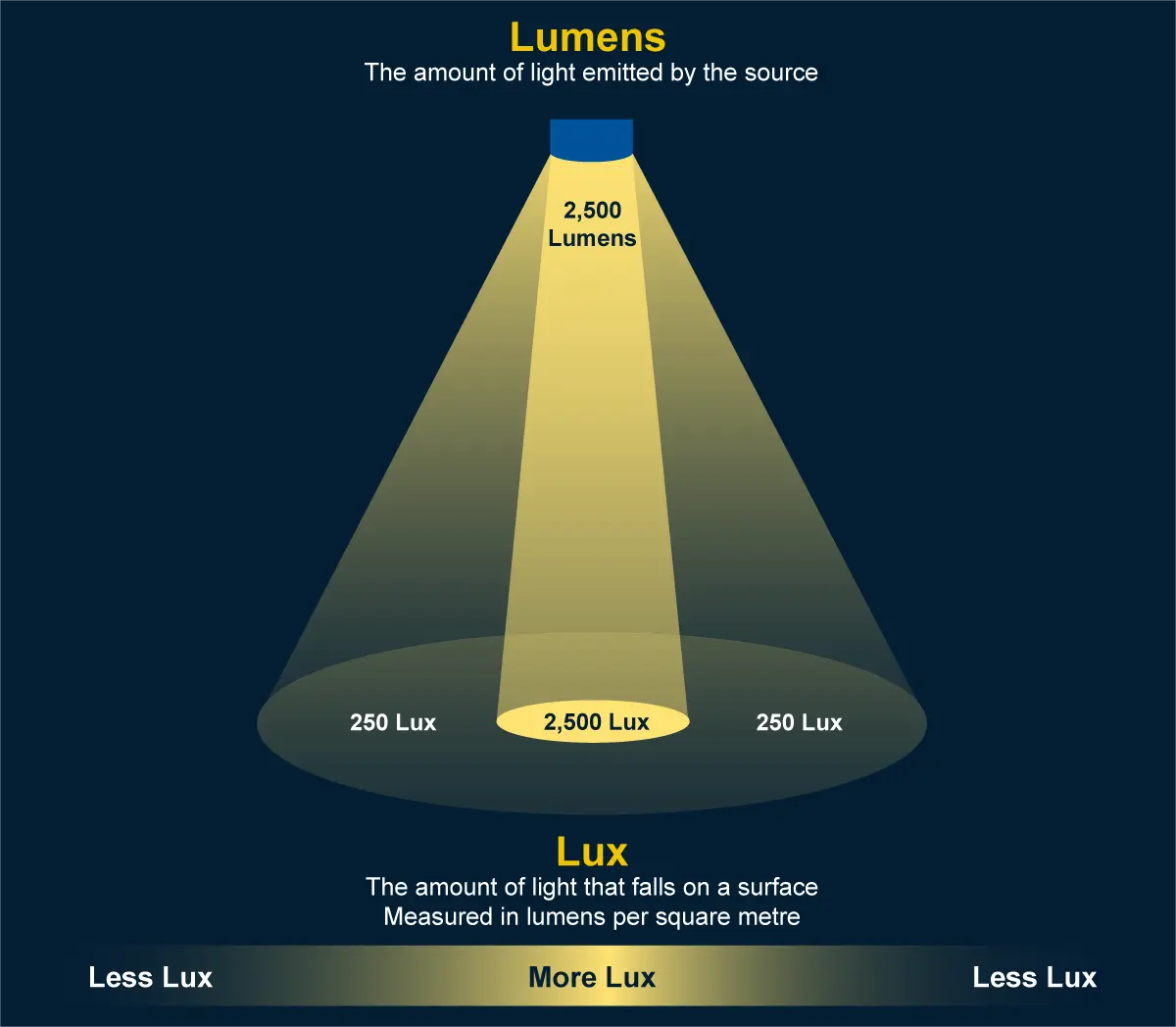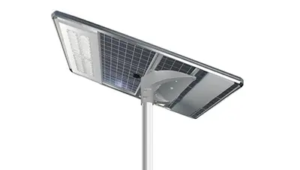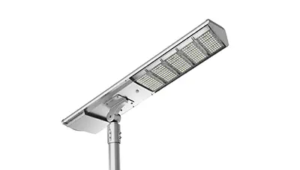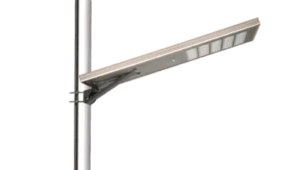Urban roads Solar street lighting design guidelines – Urban roads Solar street lights
The following is the “Urban Road Solar Lighting Design Guide” based on the International Lighting Standards (CIE/CJJ):
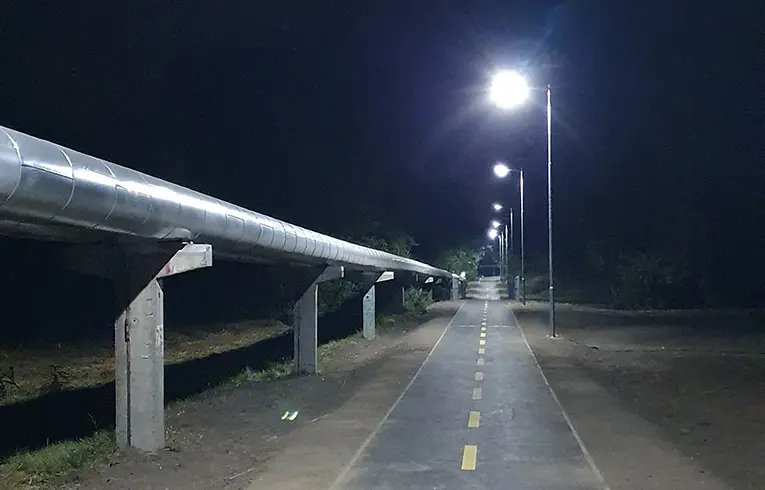
1. Brightness and Light Efficiency Design
- Illuminance Standards (Lux)
- Expressways/Main Roads: Maintain an average illuminance of 25-30 lux (asphalt pavement), reduce by 20%-30% for cement pavement; initial values need to be increased by 30%-50%.
- Secondary Roads: Maintain 15-20 lux with uniformity ≥0.4.
- Branch Roads/Sidewalks: Maintain 5-10 lux with uniformity ≥0.3.
- Bicycle Lanes: Take 1/2 of the illuminance of the adjacent motor lanes.
- Lumens and Light Efficiency
- LED light source efficiency ≥150 lm/W; total luminaire efficiency ≥120 lm/W.
- Calculation formula: Total lumen requirement = target illuminance (lux) × area (m²) / utilization factor (0.6-0.8).
2. Color Temperature and Color Rendering Index
- Color Temperature Selection
- Traffic Roads: 4000-7000K (high color temperature enhances alertness).
- Residential Roads: 3000-4000K (low color temperature creates a sense of comfort).
- Landscape Areas: 2700-3000K (warm white light matches the environment).
- Color Rendering Index
LED light source Ra ≥80 (CJJ45-2006 requires Ra ≥70), ensuring clear recognition of object colors.
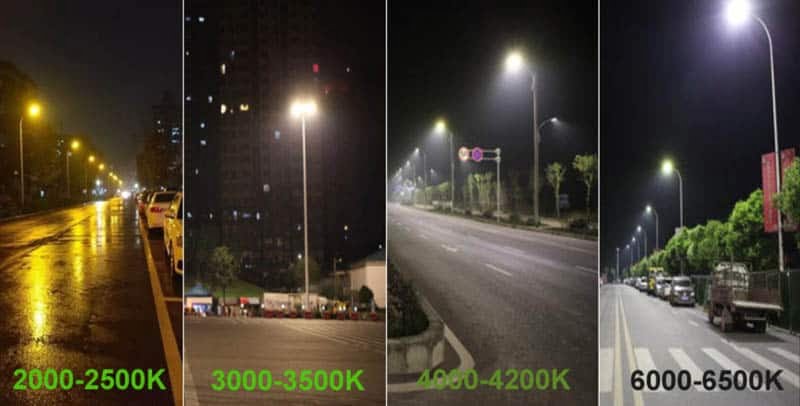
3. Lamp Post and Fixture Design
- Height and Spacing
Road Type Pole Height (m) Spacing (m) Lighting Arrangement Expressway/Main Road 10-12 30-35 Symmetrical layout on both sides Secondary Road 8-10 25-30 Alternating layout on both sides Branch Road/Sidewalk 6-8 20-25 Single side or alternating layout - Materials and Structure
- Material: Hot-dip galvanized steel (corrosion life ≥25 years) or aluminum alloy (lightweight).
- Wind resistance level: ≥Level 12, seismic intensity ≥Grade 8.
- Pole wall thickness: ≥4mm (height ≤10m), ≥6mm (height >10m).

4. Solar System Design
- Continuous Lighting Guarantee
- Battery life during rainy days ≥3-5 days (battery capacity = average daily power consumption × number of days × 1.2 redundancy factor).
- Photovoltaic panel power: Designed for an average daily sunlight of 4 hours, power ≥ system daily consumption/4h.
- Automatic Control Optimization
- Smart Dimming: Adjust brightness by time period (e.g., reduce to 50% power after 22:00).
- Sensor Control: Microwave/infrared sensing (energy-saving mode activated if traffic flow <10 vehicles/hour).
- Remote Monitoring: Integrated LoRa/NB-IoT module for real-time system status monitoring.
5. Cost and Return on Investment (ROI)
- Initial Cost
Item Unit Price Range (CNY/set) Solar LED Street Light 4500-8000 (approximately 662-1176 USD) Smart Control System 500-1200 Installation and Construction 1000-2000 - Operational Cost Comparison
- Traditional Street Lights: Electricity cost 0.8 CNY/kWh, annual maintenance cost about 15%.
- Solar Street Lights: Annual maintenance cost ≤5%, no grid electricity cost.
- ROI Calculation
- Payback period: 5-8 years (based on 10 hours of lighting per day).
- Lifetime savings: Total cost savings ≥200% over 25 years (compared to traditional lighting).
6. International Standards Reference
- CIE 115-2010: Road lighting brightness and uniformity specifications.
- CJJ45-2015: China urban road lighting design standards.
- IEC 62776: Performance and safety requirements for LED street lights.
(Note: Specific parameters should be adjusted based on local latitude, climate data, and road grade; it is recommended to use Dialux or AGi32 software for optical simulation verification.)
Urban roads Solar street lights recommendation
HIGH LUMEN SOLAR STREET LIGHT – HS SERIES
15,000lm to 20,000lm
Maximum Autonomy 2-3 rainy days
IP66 Waterproof
ALL IN ONE SOLAR STREET LIGHT – MY SERIES
Integrated design
Maximum Autonomy 5~7 rainy days
Remote Control
LED SOLAR STREET LIGHT OUTDOOR – S2 SERIES
Dusk to dawn sensors
Maximum Autonomy 5~7 rainy days
PIR sensing mode

